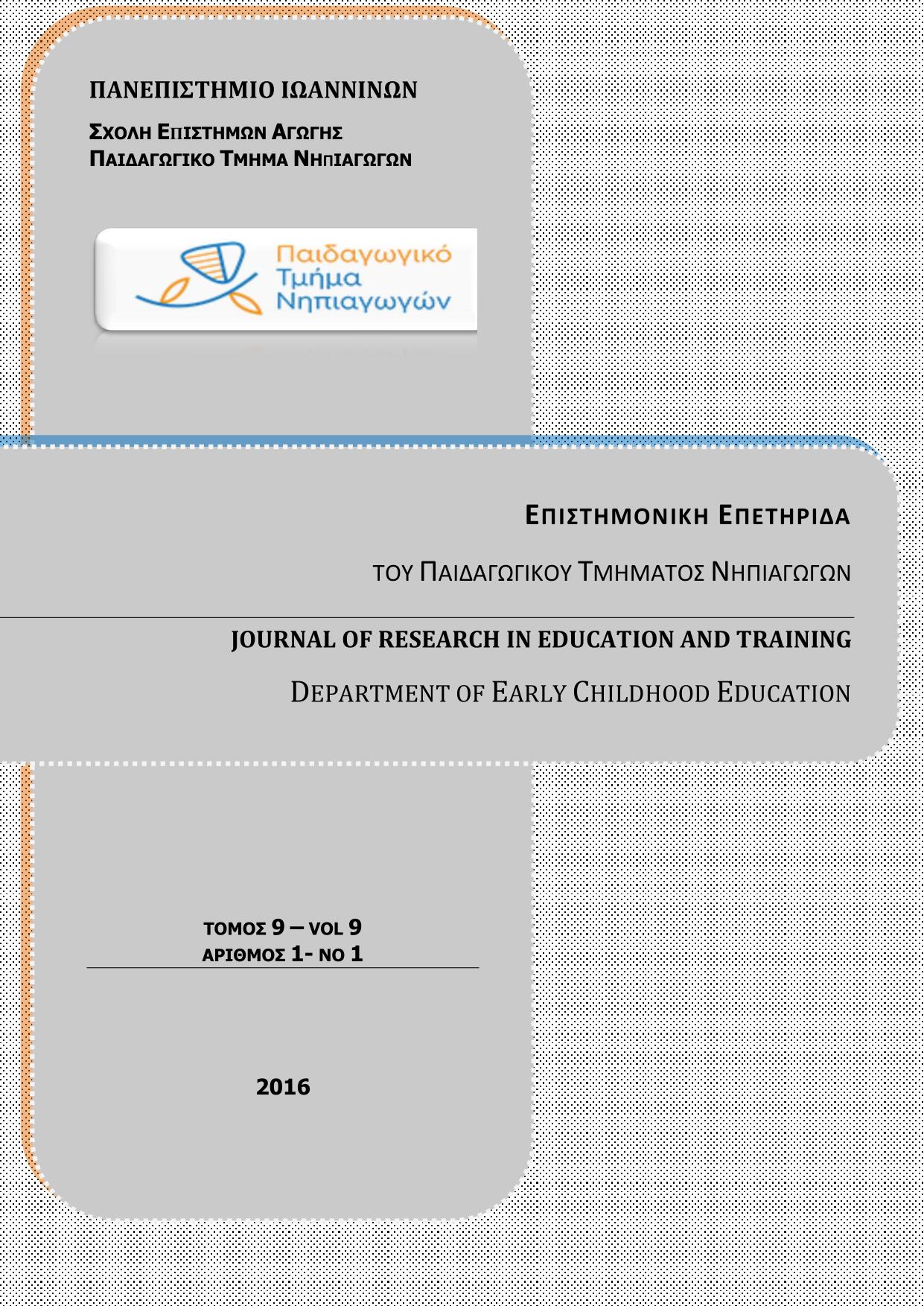Παιδαγωγικές πρακτικές και μεθοδολογικές προτάσεις για την ενίσχυση της κοινωνικότητας των παιδιών προσχολικής ηλικίας. Εφαρμογή του προγράμματος “play with me”

Περίληψη
Τα προβλήματα συμπεριφοράς που εκδηλώνουν τα παιδιά από την προσχολική ηλικία αποτελούν στη σημερινή εποχή ένα ανησυχητικό φαινόμενο με έντονες κοινωνικές προεκτάσεις. Η εκπαιδευτική κοινότητα καλείται να διαχειριστεί αυτά τα προβλήματα αποδοτικά και αποτελεσματικά. Σε αυτή την κατεύθυνση, πολλοί επιστήμονες ασχολήθηκαν με μεθόδους και πρακτικές τόσο για την πρόληψη όσο και την αντιμετώπιση αυτών των φαινομένων (ενδοσχολική βία, αποκλεισμός κ.α) στη σχολική πραγματικότητα. Ωστόσο, οι καινοτόμες παιδαγωγικές πρακτικές που στηρίζονται σε μεθοδολογικές προτάσεις (μοντέλα) και προωθούν νέες αντιλήψεις στην εκπαίδευση αυτών των παιδιών στην προσχολική ηλικία είναι ελάχιστες. Στο παρόν άρθρο παρουσιάζεται πρόγραμμα πρόληψης το οποίο δίνει τη δυνατότητα στους μαθητές να αναπτύσσονται γνωστικά, ψυχοσυναισθηματικά και κοινωνικά διαμέσου της συνεργασίας, της αλληλεπίδρασης και της σχέσης με τους συμμαθητές τους. Αποσκοπεί στην προαγωγή της κοινωνικής ικανότητας των μαθητών και στην εξάλειψη του κοινωνικού αποκλεισμού και των εκδηλώσεων βίας στο σχολικό περιβάλλον. Το παρόν πρόγραμμα στηρίζεται στα αποτελέσματα έρευνας μοντέλου πρόβλεψης της κοινωνικότητας των παιδιών στο νηπιαγωγείο. Η εφαρμογή του ολοκληρώνεται σε τρεις φάσεις με δραστηριότητες που είναι συνυφασμένες με το αναλυτικό πρόγραμμα σπουδών.
Λεπτομέρειες άρθρου
- Πώς να δημιουργήσετε Αναφορές
-
Μπεαζίδου Ε., & Μπότσογλου Κ. (2016). Παιδαγωγικές πρακτικές και μεθοδολογικές προτάσεις για την ενίσχυση της κοινωνικότητας των παιδιών προσχολικής ηλικίας. Εφαρμογή του προγράμματος “play with me”. Επιστημονική Επετηρίδα Παιδαγωγικού Τμήματος Νηπιαγωγών Πανεπιστημίου Ιωαννίνων, 9(1), 155–181. https://doi.org/10.12681/jret.9109
- Τεύχος
- Τόμ. 9 Αρ. 1 (2016)
- Ενότητα
- Άρθρα

Αυτή η εργασία είναι αδειοδοτημένη υπό το CC Αναφορά Δημιουργού – Μη Εμπορική Χρήση – Παρόμοια Διανομή 4.0.
Οι συγγραφείς που δημοσιεύουν σε αυτό το περιοδικό συμφωνούν στους παρακάτω όρους :
1. Οι συγγραφείς διατηρούν τα δικαιώματα πνευματικής ιδιοκτησίας επί των άρθρων τους, χορηγώντας στο περιοδικό το δικαίωμα της πρώτης δημοσίευσης. Άρθρα που δημοσιεύονται στο περιοδικό «Επιστημονική Επετηρίδα του Παιδαγωγικού Τμήματος Νηπιαγωγών της Σχολής Επιστημών Αγωγής του Πανεπιστημίου Ιωαννίνων» διατίθενται με άδεια Creative Commons 4.0, σύμφωνα με την οποία μπορούν να χρησιμοποιούνται ελεύθερα, με αναφορά στο/στη συγγραφέα και στην πρώτη δημοσίευση για μη κερδοσκοπικούς σκοπούς.
2. Οι συγγραφείς μπορούν να συνάπτουν ξεχωριστές, πρόσθετες συμβάσεις και συμφωνίες για την μη αποκλειστική διανομή του δημοσιευμένου στο περιοδικό έργου (π.χ. κατάθεση σε ένα ιδρυματικό αποθετήριο ή δημοσίευση σε ένα βιβλίο), με την αναγνώριση της πρώτης δημοσίευσης σε αυτό περιοδικό.
3. Στους συγγραφείς επιτρέπεται να δημοσιεύσουν την εργασία τους online (κατά προτίμηση σε ιδρυματικά αποθετήρια ή στην ιστοσελίδα τους) πριν και κατά τη διάρκεια της διαδικασίας υποβολής, καθώς αυτό μπορεί να οδηγήσει σε παραγωγικές ανταλλαγές, όπως επίσης και παλαιότερες και ευρύτερες παραπομπές δημοσιευμένων εργασιών (The Effect of Open Access)


